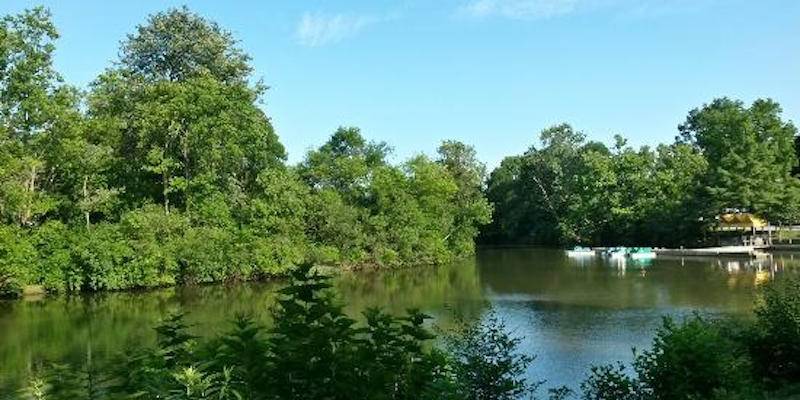Due to an algal bloom, Urbana’s Crystal Lake will close down temporarily starting now. The bloom, discovered on July 17th, was tested by the EPA and showed the presence of algal toxins. There is no mandate to close the lake, but the Urbana Park District is taking all necessary precautions.
For more information, check out their press release below:
The Urbana Park District is using an abundance of caution and closing Crystal Lake after an algal bloom was found in the lake’s sediment basin area. There is no mandate to close the lake, but district officials advise no public contact with the water until further testing is complete.
An algal bloom was first spotted on July 17 and Illinois EPA collected samples on July 18. Algal toxins were detected in their “rapid scan” strip test. Further IEPA testing of that sample is underway and results are due July 25.
Park district staff will continue to monitor the lake in the coming week and re-evaluate after test results are available.
“We are taking a prudent approach with this to protect staff and public. We will closely monitor the situation and hope to reopen as soon as we can,” explained Urbana Park District Executive Director Tim Bartlett.
The district has already begun to address this issue and others related to water quality as part of its Crystal Lake Management and Rehabilitation Plan. Blooms such as these are further evidence of the level of decline of the lake’s water quality, explained Superintendent of Planning and Operations Derek Liebert.
According to the U.S. Environmental Protection Agency, algal blooms need
- Sunlight
- Slow-moving water
- Nutrients (nitrogen and phosphorus)
When algae are present in such an amount they can produce toxins that dangerously sicken people and animals if ingested. Sensitive skin may be impacted with contact.
“The Lake has a lot of input from the surrounding watershed area. It receives run off from lawns, pavement and parking lots. Whatever washes into the ground from the surrounding neighborhoods eventually makes its way into the lake,” Liebert explained.
Preparation of the Crystal Lake Management Plan included evaluation of the lake’s nutrient levels. Engineering studies indicated that levels of nitrogen and phosphorus are above optimal levels.
The plan lays out actions that can help improve the nutrient imbalance, and the park district has already completed the first recommendation. Last winter the lake’s sediment basin was dredged and cleaned. Next steps will include adding wetlands to the lake perimeter to help clean water before it makes its way into the lake. Staff members are working with water quality experts to investigate other methods for reducing nutrient levels.
The district has directed financial resources to continue implementing the plan, but the public can help move the process along more quickly through donating to the lake project, noted Bartlett.
“We welcome assistance from the community to help us rapidly restore Urbana’s only public lake–to make it a centerpiece,” he said.
Questions about the plan or the lake should be directed to the park district at 217-344-9583.








